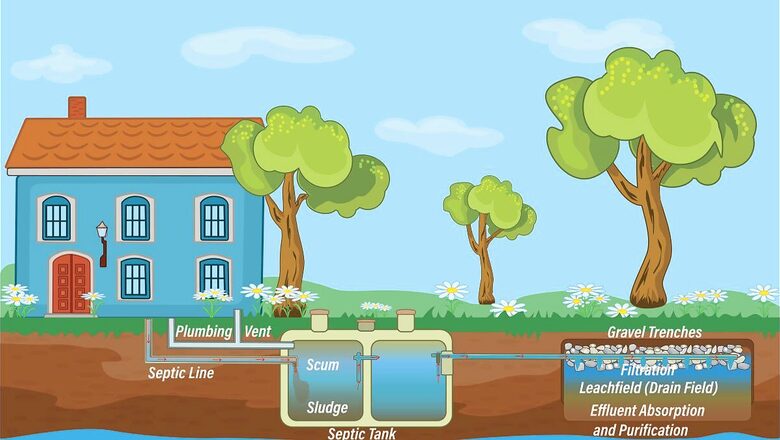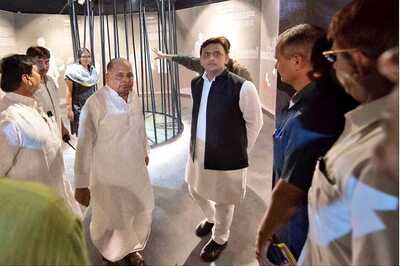
views
Mahatma Gandhi famously said, “The world has enough for everyone’s need, but not enough for everyone’s greed.” Today, with severe income and wealth inequality, his words remain prophetic. We have the technology to achieve wonders, from exploring deep space with telescopes to rapidly developing vaccines and ending pandemics. Our potential includes eradicating hunger and finding sustainable energy solutions to protect our planet.
To accomplish these monumental tasks, international cooperation is essential. The United Nations introduced the 2030 Agenda for Sustainable Development, centered around the 17 Sustainable Development Goals (SDGs). These goals demand collaborative action from all countries to address poverty, improve healthcare and education, reduce inequality, and foster economic growth. Additionally, we must confront climate change and safeguard our oceans and forests to ensure our continued existence on earth.
SDG 6: Ensure access to water and sanitation for all
Each of these SDGs is powerful, but perhaps the one we’ve seen transform India in the past decade is SDG 6: Ensure access to water and sanitation for all. In India, the Swachh Bharat Mission has changed forever the way we look at toilets, and what they mean for people who don’t have the privilege to own one. Between 2014 and 2019, the Swachh Bharat Mission resulted in the construction of 10.9 crore toilets and the Jal Jeevan Mission connected nearly 11 crore households to running water supply.
According to the World Health Organization (WHO) and the United Nations Children’s Fund (UNICEF), 1.7 billion people still lack access to basic sanitation services, such as toilets or latrines.
Poor sanitation poses serious risks to human health, education, and economic development. Some of the negative impacts of poor sanitation include:
- Increased exposure to waterborne diseases such as diarrhoea, cholera, typhoid, and hepatitis A, which cause millions of deaths every year, especially among children under five years old
- Reduced productivity and income due to illness, absenteeism, or stigma associated with poor sanitation
- Increased environmental pollution due to contamination of water sources, soil, and air by human waste
With climate change, India is seeing stronger and more erratic monsoons, which can cause serious damage to toilets and other infrastructure through flooding and landslides. When this happens, it sets communities back significantly – not only do they face monetary losses in terms of property value, but also in terms of wage loss due to the diseases that follow these events. When toilets are ‘monsoon-proof’, they’re able to better handle the monsoons, and keep dangerous pathogens away.
Monsoon-Proof Toilets: Understanding the Concept
Monsoon-proof toilets are, in a nutshell, toilets that can withstand the effects of heavy rainfall and flooding. Monsoon-proof toilets have several features, such as:
- Elevated platforms or stilts that prevent water from entering the toilet and damaging the structure
- Water-tight tanks or pits that store human waste and prevent it from leaking into the environment
- Biogas digesters or composting systems that treat human waste and convert it into useful products such as biogas or fertiliser
- Rainwater harvesting systems that collect rainwater and use it for flushing or washing
Monsoon-proof toilets can help communities in achieving adequate sanitation during the monsoon season and beyond. Some of the benefits of monsoon-proof toilets include:
- Preventing human waste from polluting water sources or causing disease outbreaks during heavy rainfall
- Improving sanitation infrastructure in flood-prone areas by making it more resilient and adaptable to changing weather patterns
- Promoting safe waste disposal and preventing contamination during heavy rainfall
In addition to SDG 6, monsoon-proof toilets can also support other SDGs.
- SDG 3 (Ensure healthy lives and promote well-being for all at all ages) by helping prevent diarrhoeal diseases, neglected tropical diseases, and other vector borne diseases that flourish in dirty or damaged toilets.
- SDG 4 (Ensure inclusive and equitable quality education and promote lifelong learning opportunities for all) and SDG 5 (Achieve gender equality and empower all women and girls) by making sure that girls have a safe, private, and clean toilet in schools, which, as we know, is a major factor for girls dropping out.
- SDG 11 (Make cities and human settlements inclusive, safe, resilient and sustainable) by reducing the frequency and amount of damage sustained during increasingly erratic monsoons.
- SDG 13 (Take urgent action to combat climate change and its impacts) by reducing environmental impact of sanitation systems by conserving water, harvesting rainwater, and managing waste in a sustainable way.
- SDG 14 (Conserve and sustainably use the oceans, seas and marine resources for sustainable development) and SDG 15 (Protect, restore and promote sustainable use of terrestrial ecosystems, sustainably manage forests, combat desertification, and halt and reverse land degradation and halt biodiversity loss) by ensuring that toilets don’t flood during the monsoons and pollute our lands and waters with dangerous pathogens.
Helping Build Momentum for Monsoon-Proof Toilets
Given that monsoon-proof toilets are all round high performers, last longer, are cheaper in the long run, and take better care of the environment and the people in it, India should have monsoon-proof toilets everywhere. Sadly, we don’t.
But that can change. Harpic, which is India’s leading brand in the lavatory care segment, is deeply aware of this gap. For three years now, it has partnered with News18 to create the Mission Swachhta aur Paani Initiative, which champions the cause of inclusive sanitation where everyone has access to clean toilets. It advocates equality for all genders, abilities, castes and classes and strongly believes that clean toilets are a shared responsibility.
Mission Swachhta aur Paani has brought together the right stakeholders (policymakers, elected officials, activists, environmentalists, grassroots organisations) to an equal platform where they can talk, brainstorm and build consensus for solutions that work for their particular problems. Monsoon-proof toilets are always on the top of the list.
Mission Swachhta aur Paani acts as a one-stop repository for information on engaging with your local municipality, grassroots organizations, and other stakeholders to upgrade toilets in your area. Join us here to learn how you can help steer us towards a Swasth and Swachh Bharat.




















Comments
0 comment